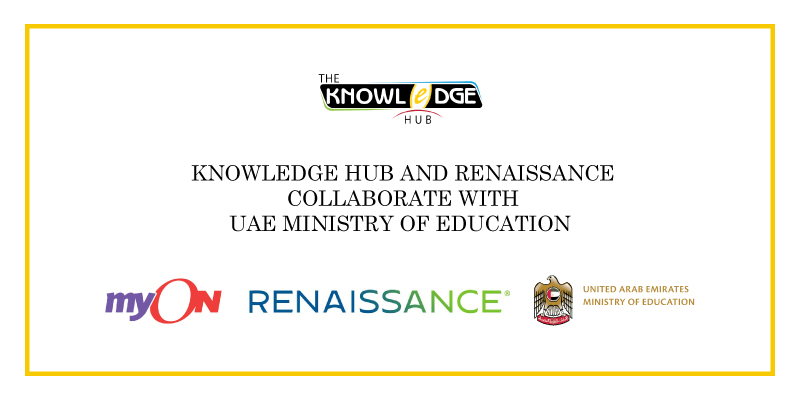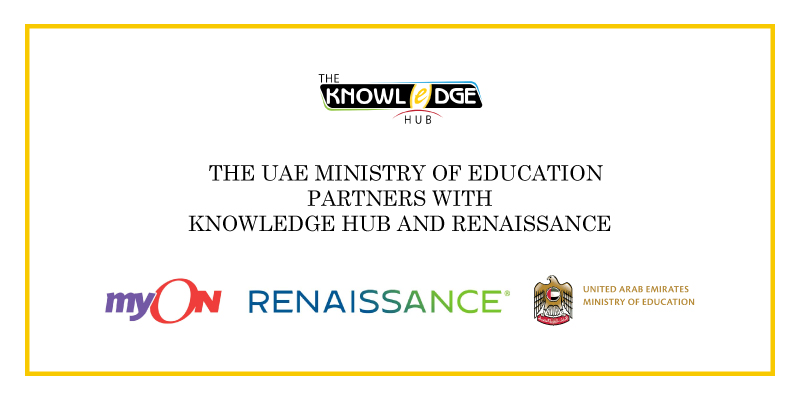
Knowledge Hub and Renaissance announce collaboration with UAE Ministry of Education
The UAE Ministry of Education, Knowledge Hub, a leading provider of learning solutions in the UAE and throughout the Middle East, and Renaissance, the creator of the myON digital reading platform, have signed an agreement to launch a project which aims to improve English reading standards for the 380,000 students in primary and secondary Emirati schools.
As part of the agreement and to support the UAE’s annual Month of Reading, a special reading competition has been announced, open to all public-school students. Running throughout the month of Ramadan, the competition challenges students to read as many digital books on myON as they can. Students who read the most will be recognized with certificates of achievement. Top-performing schools will also be recognized, as will teachers whose students have the highest rates of participation.
For the UAE Ministry of Education, this project drives the continued improvement of English literacy standards in the country. This is in line with the UAE Centennial 2071 and the Ministry’s strategic vision of an innovative education. The agreement, which covers all UAE public schools, is the largest myON governmental implementation in history and comes after two successful pilot schemes run in the country.
About Knowledge Hub
Established in 2001, The Knowledge Hub was born out of the undying need to provide high-quality education to students to cope with the ever-growing demands for advanced learning and development. Through the altruistic initiative and guidance of Sheikha Lamia Faisal Al Qassimi, invigorated by her aspiration to enhance the quality of education through IT solutions, The Knowledge Hub came into being in Dubai as a pioneer in the EdTech market. The constant support that Knowledge Hub has been providing to teachers and students since the beginning stirred the organization to take a giant leap of expanding from Dubai to other Emirates and eventually throughout the Middle East region.
To learn more, visit https://knowledge-hub.com/.
About Renaissance
As a global leader in assessment, reading, and maths solutions for primary and secondary schools, Renaissance is committed to providing educators with insights and resources to accelerate growth and help all students build a strong foundation for success. Renaissance solutions reach more than 40 percent of US schools, and are used in more than 100 countries worldwide. The Renaissance portfolio includes Star Assessments, for reliable, accurate insights into student learning; myON, to increase students’ access to high-quality reading materials; Accelerated Reader, to support independent reading practice; Freckle, for teacher-led differentiated instruction in maths; Lalilo, to develop critical foundational literacy skills; and Nearpod, for teacher-facilitated instructional delivery.
To learn more, visit https://intl.renaissance.com/












Recent Comments